Protected Bike Lanes For Lake Drive Raise Ire of Neighbors
Despite vehement objections in raucous meeting, committee approves plan.
Former Mayor Tom Barrett once joked that he didn’t know everyone on the East Side was an architect until a replacement for the East Side library was proposed. Mayor Cavalier Johnson is now learning they’re also traffic engineers.
A heated and bombastic Public Works Committee meeting Thursday centered on the planned reconstruction of N. Lake Drive through Milwaukee’s Upper East Side.
The street, from E. Newberry Boulevard to the city limits at E. Edgewood Avenue, is to be fully reconstructed with protected bike lanes and less parking as part of a $9.8 million state-backed project. Construction on the 0.85-mile project is to begin later this year.
“We want a city, I think we all agree, that is going to be safe and friendly for all ages,” said area Alderman Jonathan Brostoff.
But the very thing the city is proposing and safe streets advocates have long sought, an eight-inch tall and six-inch wide concrete barrier to protect the bike lane, is drawing the ire of a number of nearby residents.
The Department of Public Works and project proponents, including Brostoff, say the redesign would reduce speeding and reckless driving, create a safe cycling environment for people of all ages and conform with a citywide policy to build complete streets for users of all ages and abilities. It would also yield a completely new street.
But opponents, who live in some of Milwaukee’s most valuable homes in a nationally recognized historic district, say the proposal would hurt their property values, block emergency vehicles, limit the use of Lake Park and, ultimately, be less safe for cyclists.
“Right now I look out through our beautiful Cyril Colnik-designed gate and I see our neighbors across the street. And it’s really lovely. People come and they do walking historic tours in our neighborhood and they take photos in front of our gate. And now I’m going to be out there looking at a bunch of plastic,” said Jennifer Abele. “And that plastic didn’t exist in 1913.”
She said 20 neighbors were at her house earlier in the week to discuss the project. “For some reason, they feel intimidated about talking to their city officials about it, but they’ll talk to me as a neighbor,” said the longtime city official turned venture capitalist. She said the design was also less safe for cyclists, particularly children, because they would be hidden behind parked vehicles.
But DPW major projects manager David Tapia and committee chair Ald. Robert Bauman said Abele’s fear of plastic bollards everywhere, as a handful of lanes across the city are designed, isn’t what is proposed for Lake Drive. A concrete curb would be placed on the street, with plastic delineators marking its start and end.
“Take the plastic tubes down. It makes it less safe, but so what?” Bauman sarcastically rejoined. “We are not going to relitigate something that was litigated three years ago.”
The city approved its design for the federally and state-backed project in late 2022 after two public meetings and an additional letter to nearby residents, though Abele and others say they didn’t receive it. Thursday’s meeting was officially only about the cost of replacing the sidewalks. Property owners pay 50% of that cost as a special assessment, while the city pays for the parking lane and the state and federal government pay for the remainder of the project’s costs.
“We are going to limit the testimony to sidewalks, and not to the design of the road because that ship has sailed years ago,” said Bauman, before the off-mic crowd shouted “no.” The next 40 minutes were spent with people testifying about everything other than sidewalks.
Questions About Process
The city previously held two public meetings about the project, in July 2020 and April 2022.
“[We heard] primarily that we needed to address speeding, that we needed to make the street safer, that there were areas [where] bicycle movements were not safe given the current layout and the number of traffic lanes,” said Tapia.
But it also heard the suggestion that it redesign the narrower northern half of the project, originally proposed as just a painted bike lane, to match the southern half. A new parking study was conducted, said Tapia, that showed parking utilization below 50%. After the second meeting, the decision was made to drop the west-side parking lane in favor of protected bike lanes on both sides.
“At that point, working with [the Wisconsin Department of Transportation], it was determined that rather than holding a whole other public information meeting, we would just send letters to all of the residents on the corridor and down the side streets notifying them [of the design change],” said Tapia. He said between 140 and 150 letters were mailed in November 2022. “Two responses came back.” Additional letters went out to properties within the surrounding historic district. “No responses from those letters.”
Abele, and others, said those letters never came. She said they were promised a third meeting that never happened and that the project website wasn’t properly updated in a timely fashion. Brostoff disputed the website issues.
Tapia said canceling the project at this point, which is being reviewed by contracting firms for bids, would result in the state pulling the funding. It would be placed in a queue that would place its construction a decade out, at the earliest. The project manager said there are other risks beyond just timing. WisDOT could ask the city to reimburse it for design costs incurred to date. “I do know of instances state wide that that has occurred,” said Tapia. “The other concern I have is the confidence level they have in us to deliver projects for them.” He said WisDOT could take over design control. “We want to be the designer of choice. We want to be the ones designing these projects.”
Brostoff said declining the project now would have disastrous impacts. “Because [WisDOT] will say, Milwaukee is not a stable market for us to invest our money in. We will go to other communities that will take our dollars.”
“What I’ve heard over and over from everyone is the street needs to be paved,” said Brostoff. “I understand people are upset with bike lanes, we have people on all sides of that. And people want the parking, I get that. But this is not the place where we change those sorts of design decisions.”
Concerns About Protected Lanes
Other residents offered concerns about the use of concrete barriers.
“I cycle every morning 20 miles, so I know how the streets work,” said Sandra McSweeney. She said removing the parking lane would make it more difficult for vehicles to pull out of the way of emergency vehicles and harder for people to turn into their driveways. “I am asking for the lipstick on the pig to be better.” She said the lane didn’t make sense because there wasn’t one on Lincoln Memorial Drive. But paved bike trails do line Lincoln Memorial Dr. all the way to Downtown.
“I don’t think with these barriers up [bicyclists] are going to get any more protection,” said Dina Goode. She also said she was concerned that the parking usage data wasn’t accurate and that safety concerns would emerge.
“This is just so not only unsightly, but it’s dangerous,” said Laura Pfaff who expressed a list of concerns including garbage pickup and issues crossing the curb. She accused the city of not sending the plans out and that the resulting infrastructure would be damaged by drivers, which she said was happening elsewhere. “Do you know what that looks like now?”
“I get it, you oppose traffic calming in all forms,” said Bauman. He said if opponents felt they were wronged, they should sue based on the process.
“I came to this meeting and I was a little set back by the attitude that you guys had immediately upon us getting here,” said Pfaff.
“Who’s ‘you guys?’ What’s my attitude? I haven’t said one word the whole time,” interjected Ald. Lamont Westmoreland.
Alderwoman Larresa Taylor said the committee was listening. “I want you to be very careful about putting us all into a group,” she said.
“This is just a really important change to one of the nicest areas of Milwaukee,” said Pfaff.
Project Support
“In all likelihood, this project will increase your property values,” said cycling advocate Cade Gerlach in response to some of the criticism. He said data from DPW showed traffic calming projects were working.
“We can’t make these decisions based on vibes. We have professionals and we have guidelines dictating [them] from NACTO. We also have the benefit of experience now,” said Anna Bailliekova, a member of the city’s Pedestrian and Bicycle Advisory Committee. “The city’s undertaken a number of traffic calming projects throughout the city. We have solved the question of how to plow these lanes. We have solved the problem of emergency vehicles. These lanes are actually wide enough for emergency vehicles to use them. I think we should lean on that experience.”
“Our public right of way is a public good. We have decisions to make and tradeoffs, legitimate tradeoffs about how we use that space. To say that in one of the toniest neighborhoods, in a beautiful part of the city, that the right of way should be used for private vehicle storage rather than transportation and making it accessible for everyone as a city –” said Bailliekova before the crowd shouted her down.
“We are going to clear the room,” Bauman warned the packed room. His colleagues also interjected.
“We have heard from, I think, four people that are in opposition to this project,” Westmoreland noted. “Not one that is for this project, and [now] we have heard from two of them” and they did not laugh “at any of you” or “blurted out when you were all speaking… So please, give them that same respect.”
After more than an hour of discussion, the committee members voted 4-1 to endorse the sidewalk funding plan and keep the project on track. Ald. Milele A. Coggs, participating virtually, voted in opposition. The full Common Council is to vote on the proposal at its June 11 meeting.
Tapia said Shorewood is expected to remove a parking lane from its reconstructed segment of Lake Drive.
Protected bike lanes, sometimes called cycled tracks, are recommended by National Association of City Transportation Officials (NACTO) guidelines to eliminate conflict points between vehicles and cyclists, reduce the risk of “dooring” where a door is opened in front of a bike, reduce illegal parking and make bicycling more attractive and safer. Milwaukee joined NACTO in 2023 as part of its Vision Zero push to eliminate traffic deaths.
Design Plans and Current Configuration
If you think stories like this are important, become a member of Urban Milwaukee and help support real, independent journalism. Plus you get some cool added benefits.
Political Contributions Tracker
Displaying political contributions between people mentioned in this story. Learn more.
- May 11, 2017 - Tom Barrett received $400 from Sandra McSweeney
- June 20, 2016 - Tom Barrett received $400 from Sandra McSweeney
- February 20, 2016 - Cavalier Johnson received $250 from Robert Bauman
- February 13, 2016 - Milele A. Coggs received $10 from Larresa Taylor
- December 30, 2015 - Tom Barrett received $400 from Jennifer Abele
City Hall
-
Council Blocked In Fight To Oversee Top City Officials
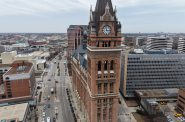 Dec 16th, 2025 by Jeramey Jannene
Dec 16th, 2025 by Jeramey Jannene
-
Latest Effort to Adopt New Milwaukee Flag Going Nowhere
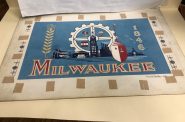 Dec 3rd, 2025 by Jeramey Jannene
Dec 3rd, 2025 by Jeramey Jannene
-
After Deadly May Fire, Milwaukee Adds New Safety Requirements
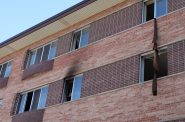 Dec 2nd, 2025 by Jeramey Jannene
Dec 2nd, 2025 by Jeramey Jannene
Transportation
-
Congestion Pricing Cuts Air Pollution in New York City
 Dec 14th, 2025 by Jeff Wood
Dec 14th, 2025 by Jeff Wood
-
FTA Tells Milwaukee to Crack Down on Fare Evasion — Even Where Fares Don’t Exist
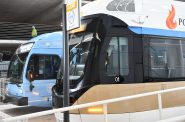 Dec 12th, 2025 by Graham Kilmer
Dec 12th, 2025 by Graham Kilmer
-
Will GOGO’s Bus Service Ever Get Going?
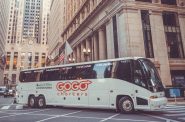 Dec 9th, 2025 by Jeramey Jannene
Dec 9th, 2025 by Jeramey Jannene


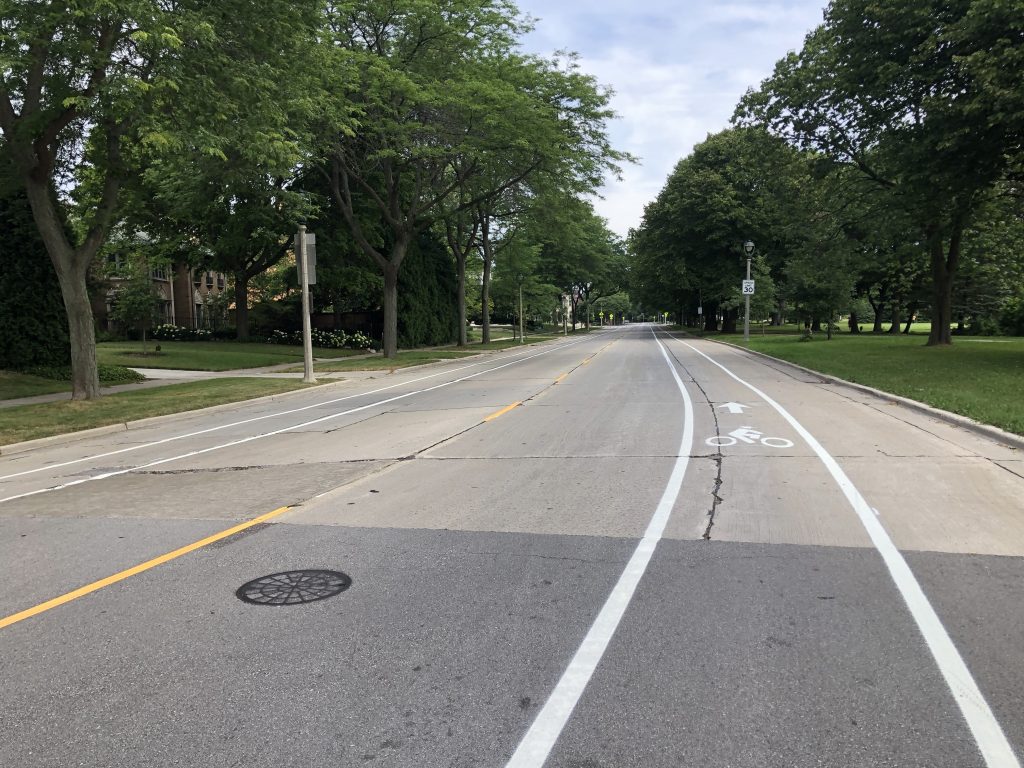
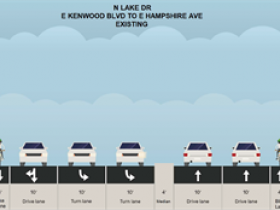
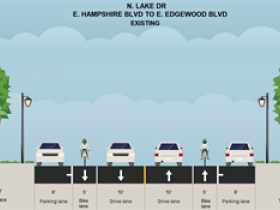
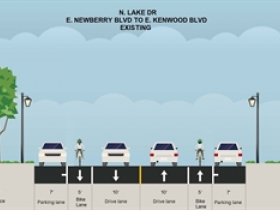
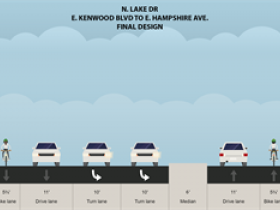
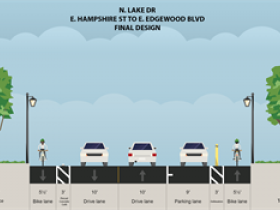
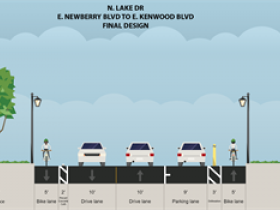


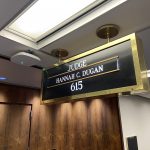















Right now, I look through my nifty Cyril Colnik-inspired iPad screen frame at Jennifer Abele looking out through her beautiful Cyril Colnik-designed gate, imagining a bunch of plastic that will never manifest.
Entitlement much, dear? Unbelievable.
Good for Bauman recommending that they sue if they had a problem with the approved plan.
Love the idea of protected bike lanes on this stretch! Personally, I gave up on bike commuting months into the pandemic because of all the reckless driving, including drivers passing in the bike lanes at high speeds. Just look at how many of the plastic lane delineators have been run over on Locust St, and then try arguing about how unprotected bike lanes are fine. Looking out your gated property at carnage is probably less attractive than seeing 8” high minimalist barriers. Or maybe that’s just how an ordinary citizen sees it? Anyway, looking forward to biking more on the streets of our City, not just solely on the Oak Leaf!
The more protected bike lanes the better. I love the city’s move to address pedestrian and bike safety by making significant changes to our roadways. Slowing down traffic and increasing bike and pedestrian traffic just feels better in our city. My idea of great cities are Amsterdam and other smaller cities in the Netherlands.
Good thing this was approved, pay no mind to the NIMBYs